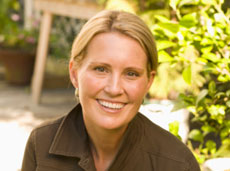October, 2012 and November, 2012: The Grid Rules and how they may help you
The theme for October and November's cases involves the grid rules and how they can greatly benefit those that are applying for disability benefits and are 55 years of age or older. Each of the 4 gentlemen listed below received disability benefits on their initial application (through working with our office), and the grid rules appeared to play a large role in their receiving favorable decisions. Calling a skilled Social Security disability lawyer familiar with the Social Security Grid rules can help you evaluate whether you might qualify for disability benefits under these rules.
Nathan is a fifty-one (51) year old gentleman with a long work history involving operation of heavy machinery (and which included heavy lifting). Ultimately, Nathan had to discontinue working as a result of significant low back problems related to degenerative disk disease of his low back. Nathan's orthopedic surgeon was kind enough to address a Physical Residual Functional Capacity Questionnaire on his behalf indicating that his condition had remained severe during the two year period of time he was treating him and provided him with a set of functional limitations that, at the very least, called for a sedentary (that is to say, primarily sit down) work capacity. Under Social Security's grid rules, Nathan was deemed to be closely approaching advanced age, had a high school education with no education that would allow for direct entry into skilled work, had acquired no semi-skilled or skilled training which would allow him to transfer into semi-skilled or skilled work in a sit down capacity, and thus was found disabled under the Grid rules even with a full sedentary work capacity. Consequently, Nathan was awarded a fully favorable decision on his initial application with our office without the need to go through what very well could have been a 1 ½ year appeals process.
Mark is a fifty-eight (58) year old gentleman who worked consistently as a carpenter for 27 years. Unfortunately, Mark was in a serious car accident in 2009 which caused him to experience pain symptoms in his neck from degenerative disk disease issues. He undertook cortisone injections with the hope that this would assist with this problem, but unfortunately, he continued to experience both neck pain and symptoms into his left arm as a result of his condition. Likewise, over time, he developed painful symptoms into his low back and hip. Given Mark's age, he was considered of advanced age at the time he became disabled, had only a high school education and a carpentry background which did not allow for a transfer to other skilled or semiskilled work in a sedentary occupation. Consequently, Mark was granted benefits on his initial application for benefits. Likewise, it is interesting to note that Mark was able to continue receiving unemployment benefits (in addition to Social Security disability benefits) given he could say he remained available for gainful employment with the Department of Labor (and was continuing to look for jobs on a weekly basis that would accommodate his condition). While there are many circumstances where it remains inappropriate to continue receiving unemployment benefits if one is claiming they are disabled under Social Security's rules, this may not be a problem if one is of advanced age and would be found disabled under the grid rules. While a finding under the grid rules may call for a finding that one is disabled, it does not mean that one is incapable of all forms of gainful employment: in essence, a finding under the grid rules means that Social Security does not deem there to be jobs in significant numbers in the national economy given their age, education, past work experience, and functional limitations. Thus, in many of these types of cases it is appropriate to continue filing for unemployment benefits if one is able to say that they are continuing to look for a job within their functional limitations and remain “available for gainful employment.”
John is a fifty-six (56) year old gentleman who worked up until the age of fifty-four (54) years of age as a union iron worker, at which point he had to discontinue working as a result of a torn meniscus, back problems following surgeries and shoulder problems following years of work in a very physically demanding profession. John has a high school education and training which consists of a three year apprenticeship training program. Given we were able to obtain from his treating physicians medical questionnaires which provided John with a very limited residual functional capacity (that is to say, he was limited to even less than sedentary work capacity), John was likewise provided with a fully favorable decision on his initial application with Social Security (thereby avoiding what might have been a very lengthy appeal process).
Richard is yet another example of how Social Security's grid rules work. Richard is a fifty-seven (57) year old gentleman with a long work history as a sales manager for appliance stores (over the course of more than 35 years) and a high school education. Richard had to discontinue working following injuries sustained in a automobile accident which caused him serious knee injuries. Richard had undergone knee surgery on one of his legs years prior to the accident, and following the automobile accident, required serious knee surgery for his other leg. Richard's orthopedic surgeon was kind enough to provide very telling medical questionnaires which addressed the fact that Richard either met a medical listing of impairment or, at the very least, met a grid rule given he remained limited to what would have been, at best, a sedentary work capacity. The grid rules would have called for a finding of disabled given Richard was of advanced age, he was limited to at best a sedentary work capacity and had a past work and educational history which would not have allowed for a transition to other skilled sit down work. Consequently, I am happy to see that Richard did not need to proceed through what might have been a lengthy appeals process as well.
 Law Offices of Russell J. Goldsmith Home
Law Offices of Russell J. Goldsmith Home























